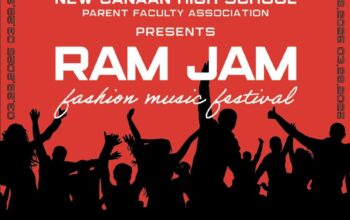Isabel Lawrence
Reporter
 The infamous October snowstorm that left many in the dark left some questioning New Canaan’s emergency preparedness. The Office of Emergency Management (OEM) is working to make the storm fall out as pain free as possible, utilizing the best possible technology for improved communication throughout the town. The next possible project? New Canaan’s very own AM radio station.
The infamous October snowstorm that left many in the dark left some questioning New Canaan’s emergency preparedness. The Office of Emergency Management (OEM) is working to make the storm fall out as pain free as possible, utilizing the best possible technology for improved communication throughout the town. The next possible project? New Canaan’s very own AM radio station.On the Dec. 16 meeting at the police station, the product in consideration, Alert AM Emergency Advisory Radio System, was tested. However, problems surfaced during the trial: while the purpose of the station is to broadcast updates from the OEM and First Selectman Mr. Rob Mallozzi during times of crises, the test product could only broadcast into cars. “It sounds great, it looks great, we tested it; we had one initial test. But the problem with the system is, it’s really a traffic advisory warning system and that’s what it’s designed to do,” said Mr. Handler. “It’s designed to actually broadcast AM radio to your car. And because it broadcasts at such a low frequency, it doesn’t have enough power to generate enough of a signal to travel far enough away from the base station and into homes.”
“If this was to broadcast into the home, we’d already have one in town,” Mr. Handler said. “We would not be waiting for a budgeting process, we’d have it in town already. I think it’s that critical of a means of communicating with this population. If it were to work the way we need it to work we’d already be broadcasting live right now.”
Mr. Mallozzi said some problems could occur with the physical features of New Canaan’s land. “New Canaan, because of the hilly geography we have, is an impediment to sound waves,” Mr. Mallozzi said. “If you live near the water or you live in the flatter areas of America, you get much better radio signal and much better communication through radio waves than you do around here.”
If this solution were to work, however, it would not be in effect immediately. “It takes about six months to get the license and everything in place, three to six months,” Mr. Handler said. “It’s not as if we can buy it and launch it tomorrow, it takes a little time to get licences from the FCC assuming we can do all that, assuming we want to proceed with it, we can get the license. My guess is that by next hurricane season we could have it up if we want it to.”
The AM solution can also be useful for informing students. “If we made it something that was helpful for them and useful for them, then people might get in the habit of flipping that channel on,” Dr. Luizzi said. “When you wake up in the morning and there’s snow on the ground you can flip on the AM channel and see if the school’s closed or if there’s delay, even if you have no power.”
Mr. Mallozzi explained how the messaging process would work. “The message would probably change every four hours,” he said. “We would offer the same message up until that point, so people could tune in and basically hear the same thing over again but they would know that at 12 o’clock there’d be a new message, at four o’clock, and at eight o’clock at night type of thing. So that we could interview if certain showers were available, or if a shelter had opened up somewhere. But it wouldn’t be a constant broadcast of a new message.”
These messages would consist of warnings and notifications for citizens. “I think you would hear things from me or from Mike Handler that stated the library is open as a warming center, that the teen center is offered up as a warming center, that showers were made available over at YMCA, which they’ve done in the past,” Mr. Mallozzi said. “That there’d be some kind of a centralized food collection area where we would have water and meals for people that needed meals.”
Though still pending, the radio project seems to hold potential despite its unexpected problems. But perhaps in the near future, New Canaan’s news could get to viewers live and on the air.



